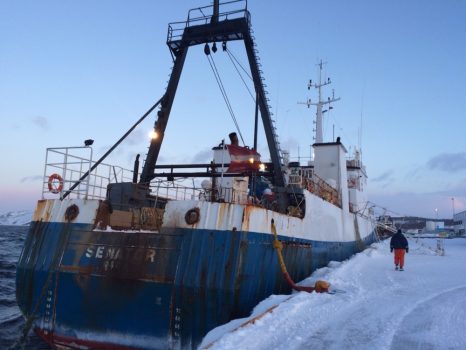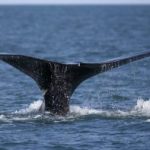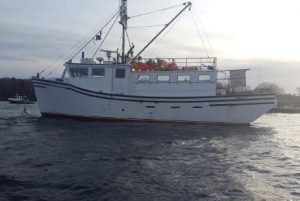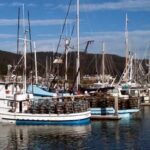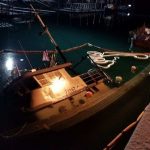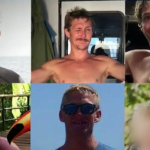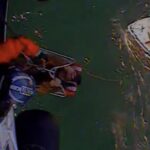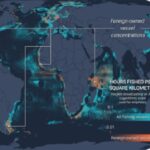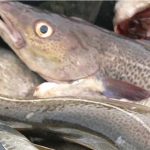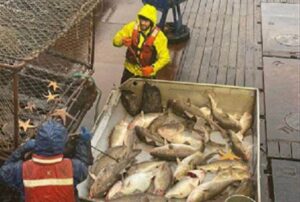Tag Archives: Snow crab
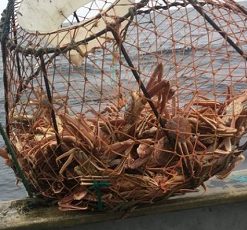
Coronavirus: Concerns raised about pending Cheticamp snow crab fishery
Setting day for the lucrative fishery is Friday and it runs until June 30. “Residents of Cheticamp are really scared and upset about the coming of the crab fishery,” Cheticamp resident Yolande LeVert said. “I’m not sure what’s happening here, I don’t know why there is not more communication with the residents of Cheticamp. Are there rules on the wharf when the fishermen come in for the ones that unload the boats?” ,, LeVert noted the snow crab fishery will see more than 30 boats arrive from around the Gulf of Saint Lawrence, mainly from New Brunswick and Quebec, for the Zone 12F snow crab fishery. That equates to about 120 fishermen, in addition to dozens of plant workers, many of whom arrive from Mexico. >click to read< 08:35
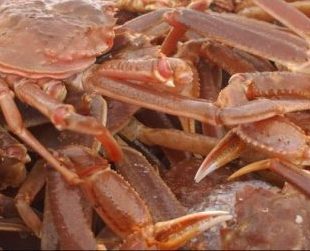
Feds delay Snow Crab season in Gulf of St. Lawrence
The Department of Fisheries and Oceans said the decision on Thursday to pause the season will let everyone involved in the fishery to put necessary health and safety measures in place. Seafood processors in the Maritimes had called on Ottawa to delay the crab and lobster season, warning that moving ahead with fishing risks workers’ health — and the bottom line — amid the COVID-19 pandemic.,, New Brunswick Premier Blaine Higgs said Thursday the province hopes Fisheries and Oceans Canada will delay the spring season for a few weeks, with the possibility of federal compensation. The Maritime Fishermen’s Union, which represents 1,200 harvesters in New Brunswick, said Friday they support a delay of the lobster season until May 15 >click to read< 16:28
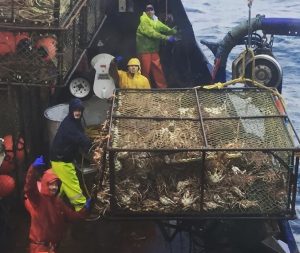
‘Deadliest Catch’ Captains Discuss What Happened In F/V Destination Tragedy – Sig encourages re-evaluation
It’s no secret that crab fishing is the most dangerous job in the world, and that is why Deadliest Catch fans hero worship the captains and crew that star on this adventurous reality series. On February 11, 2017 the Destination sunk. What happened to this crab fishing vessel and what have the Deadliest Catch captains said about the boat and crew?,,, Although the Destination was not part of the Discovery show, the captain and crew were friends with the captains of the reality show. >click to read< 10:50
Emotional ‘Deadliest Catch’ captain Sig Hansen still haunted by friend lost at sea – Hansen is encouraging all the boats in the community to re-evaluate their boats so that tragedies like the F/V Destination don’t happen again. And while the sinking is a painful memory for Sig, he believes the awareness it has garnered will save lives for years to come. >click to read<
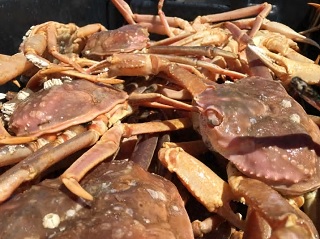
Overall 9% snow crab quota decrease, but one area gets 48% boost
A snow crab fisher on the south coast of Newfoundland is happy to hear that his area is getting a 48 per cent quota increase for this upcoming season. The Department of Fisheries and Oceans released its decision on Wednesday, which outlined an overall nine per cent decrease for the catch. Fishers will get $5.38 a pound for their catch, as well, the price suggestion put forward by the union. Calvin Young, who fishes in the 3Ps area and lands his catch in Branch, said he’s happy to see the big quota boost for his area, but it’s not as big as it sounds. >click to read<15:55
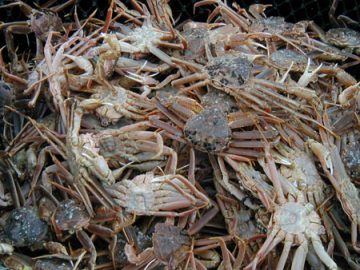
FISH-NL takes stand against precautionary approach management system for snow crab; ‘inshore harvesters don’t want it’
The Federation of Independent Sea Harvesters of Newfoundland and Labrador (FISH-NL) has taken a stand against the implementation of the so-called ‘precautionary approach’ management system in the commercial snow crab fishery. “The message is loud and clear from all coasts — inshore harvesters don’t want it,” says Ryan Cleary, President of FISH-NL. “Fishermen say the management system that’s in place now works well enough, and follows the normal cyclical nature of the stock.” The precautionary approach would have three levels or zones of classification — critical, healthy and cautious, with talks are ongoing between DFO and the FFAW-Unifor on setting the reference points dividing each category. FISH-NL is against the introduction of the precautionary approach altogether. >click to read<17:20
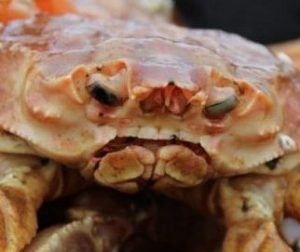
Marine Stewardship Council not convinced a single season with no whale deaths means fishery is sustainable
Despite a year when no North Atlantic right whales died in the Gulf of St. Lawrence, the snow crab fishery has not won back its certification from a marine stewardship group. The Marine Stewardship Council has extended the suspension of its “sustainable” fishing certification for New Brunswick crab products by another year. The council suspended its certification last March after 12 right whales were found dead in the Gulf of St. Lawrence in 2017. At least two deaths were linked to entanglements in snow-crab fishing gear. Last season, the federal government instituted widespread fishing closures and shipping-speed limitations. Although there were no deaths, three whales were still entangled in snow crab gear. >click to read<23:50

Latest DFO assessment of NL snow crab presents a ‘mixed bag’ of stock health
The Department of Fisheries and Oceans (DFO) released its stock assessment for snow crab Tuesday, Feb. 26 and overall it was described as a “mixed bag.” According to information provided in a technical briefing, there are modest increases in overall exploitable biomass of snow crab but it is near its lowest observed level since the mid 1990’s. DFO crab scientist Dr. Krista Baker did point out there is a return to cooler waters, which is a positive sign going for the stocks. >click to read<18:14

FISH-NL accuses FFAW of fake outrage and hypocrisy over new snow crab management strategy
The federal Department of Fisheries and Oceans (DFO) held meetings earlier this week in St. John’s, Clarenville, and Gander to consult inshore harvesters on a proposed new management strategy for snow crab. The so-called Precautionary Approach includes stock status zones such as critical, cautious and healthy, as well as reference points and harvesters control rules. A huge contingent of FFAW-Unifor executive members slammed DFO at the public meetings for blindsiding inshore harvesters, accusing the department of bringing them into the discussion at a “late stage.” >click to read<
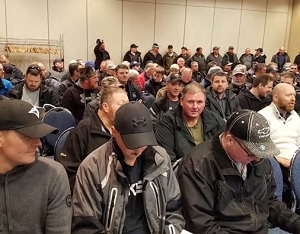
Axed jobs and closed plants loom, warn crab harvesters about new management approach
Fishing businesses are on the line if the Department of Fisheries and Oceans implements a new management system for snow crab, says Port de Grave harvester. “Bankrupt … plant workers will lose their jobs. Plants will definitely close. Fishermen are definitely bankrupt,,, I’d say 80 per cent of the industry is bankrupt,” said Brad Doyle.,,, “We’ve had environmental issues that weren’t taken into account,” says fisher Brad Doyle. Fishers like Doyle want to known what impact other fish species and the growing population of harp seals is having on snow crab. >click to read<21:49
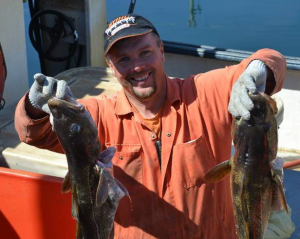
N.L. crab fishers taken aback by DFO’s latest details on crab data
Alfred Fitzpatrick says it seems the opinions of fish harvesters aren’t carrying much weight with the science branch of the Department of Fisheries and Oceans (DFO) as of late. “We always thought we had a pretty good relationship with DFO Science – when it come to crab anyways, cod is another story,” said the Garnish-based fishermen, who represents harvesters from the Burin Peninsula in crab fishing areas 10 and 11 on the Fish, Food and Allied Workers (FFAW-Unifor) union’s inshore council. “It seems like now it’s changing. It’s not a good working relationship, not as good anyway, I’ll say.” >click to read<16:10
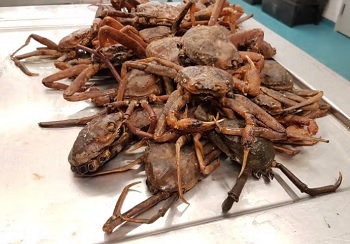
DFO warns 80% of N.L. snow crab are below fishable size
Eighty per cent of the snow crab in the province’s waters are now smaller than fishable size, and new biological research from the Department of Fisheries and Oceans says fishing pressure on the already strained stock is the main problem. “There is a major biological concern here,” said DFO biologist Darrell Mullowney.,, The news comes just as the Department of Fisheries and Oceans is set to meet with harvesters about snow crab in a series of meetings being held across the province between November 19 and 29. >click to read<19:44
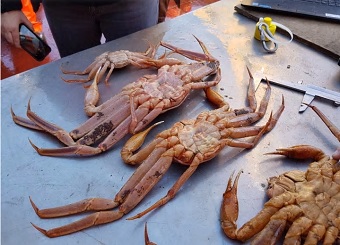
Newfoundland and Labrador: Snow crab fishery changes tactics as stocks hit 25-year low
A study six years in the making shows some grim statistics for snow crab in Newfoundland and Labrador. The study was released at the same time the Department of Fisheries and Oceans announced the crab fishery was moving to a precautionary approach. That means if the crab numbers are low, the total allowable catch will be lowered, meaning less fishing for the province’s harvesters. >click to read<19:11
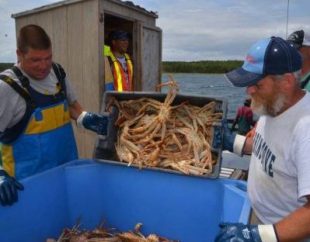
Cape Breton snow crab season short but lucrative
Glen Burns doesn’t bother kicking himself over it too much anymore. “I was never much of a gambler,” said Burns. “You won’t see me at the casino or down at the fire hall.” It was 2002, he had a one-year-old son and lobster gear he’d just taken over from his father. What the Margaree Harbour fisherman didn’t have was $120,000 to buy three crab traps worth of quota to add to the handful he’d taken over with his dad’s licence. And what neither he nor anyone else knew at the time was how valuable the crustacean would become to Cape Breton’s west coast. >click to read<
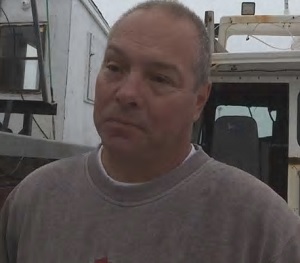
NewBrunswick: Some go home with more money in their pockets, some less, as fishing season ends
Lobster and crab fishermen in northern New Brunswick are removing their gear from the water Friday, as the season draws to a close. Saturday marks the official end to what fishermen described as a roller-coaster season in the Acadian Peninsula. All areas close to fishing on June 30, except for Neguac and Burnt Church, where the lobster season was extended until July 2. There were outcries and protests from the fishing community throughout the season, over new measures imposed by the federal government to protect endangered north Atlantic right whales, after a historically deadly summer. At the end of this eventful season, the feelings are mixed. >click to read<12:39
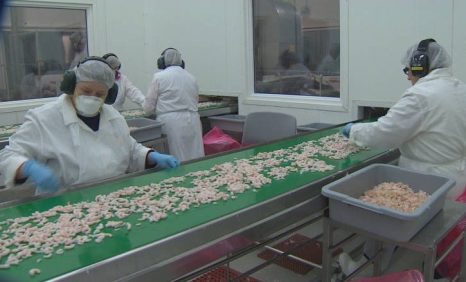
Disappearance of Daley Bros. another harbinger of bigger crisis facing N.L. fishery
April 20 was a difficult Friday for dozens of people working with Daley Brothers Ltd. in New Harbour. Their hopes of returning to work at the two seafood processing plants in the Trinity Bay community were abruptly dashed, after word spread that the company would not be reopening.,, Owner Terry Daley has refused interview requests, and has even rebuffed questions from Fisheries Minister Gerry Byrne, who’s trying to figure out if the closure is permanent, so he can activate government assistance for the displaced workers.,,, Another prominent company name in the industry is likely gone for good, much like P. Janes & Sons, Breakwater Seafoods and others. >click to read< 16:34
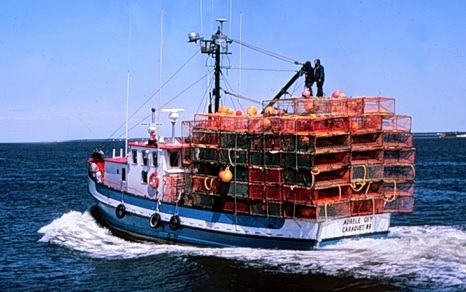
Making a killing – As whales die in frightening numbers, New Brunswick’s lucrative snow crab industry struggles under a global spotlight.
It all started when Charles Anastasia’s boat sank. This was in 1979, when 26-year-old Anastasia took to the ocean every morning to fill his nets with cod, back when that fish was still the beating heart of the Atlantic fishery. With his boat pinned 100 kilometres offshore during a “perfect storm,” a floating telephone pole skewered the hull like a marshmallow on a stick. The eight-man crew barely got a mayday out and survival suits on before the vessel sank beneath the 20-metre waves.,,, Soon after, the broad-shouldered, wide-cheeked man uprooted his life and moved to Alaska, buying and selling seafood for a living. It was here he encountered snow crab: a flat-bodied, 10-legged crustacean that transformed his life and would soon, on the other side of the continent, revolutionize an industry. >click to read<

‘Everybody’s losing’: Crab fishermen prepare for more closures this week
With nine more fishing areas to close this week as endangered whales arrive in the Gulf of St. Lawrence, New Brunswick snow crab fishermen are braced for a turbulent season. “We don’t know what’s going to happen today, tomorrow and for the coming days,” said Jean Lanteigne, general manager of the Regional Federation of Professional Fishermen, based in Shippagan. On Wednesday at 4 p.m., nine more “grids” or portions of grids will close to protect North Atlantic right whales from getting tangled up in fishing gear. That number is in addition to the six that closed last week. “It’s impossible to fish in there,” said Lanteigne. >click to read<18:01
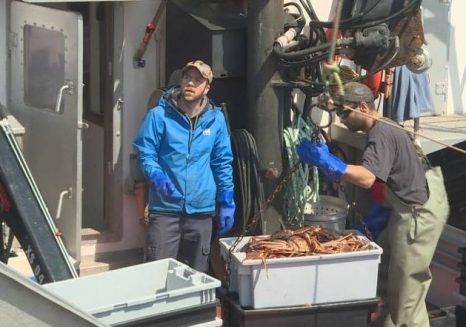
Crab fishermen struggle as season begins under strict new regulations making some fishing grounds off limits
Snow crab fishing began last week in northern New Brunswick, the first season under strict new regulations by Ottawa to protect the endangered North Atlantic right whale. The most drastic of the new measures has been the closing of a zone off the province’s northeastern coast to fishing, a location where 90 per cent of the whales had migrated to last summer. That area is also an area rich in snow crab. As many boats came back from their first trip out to sea, some fishermen couldn’t help but feel anxious about what the season would bring. >click to read<16:11
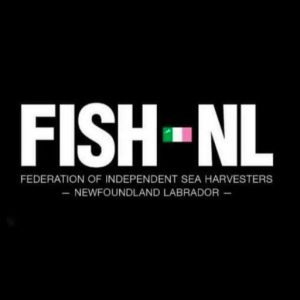
FISH-NL reiterates call for province to allow in outside buyers after panel sets 2018 snow crab price at far less than the mainland
The Federation of Independent Sea Harvesters of Newfoundland and Labrador (FISH-NL) says the decision of the Fish Price Setting Panel to set the 2018 price for snow crab at $4.55 a pound — well below the price paid to crab harvesters in the Maritimes — supports the call to open the provincial market to outside buyers. “When you learn the price of crab in Newfoundland and Labrador has been set at $4.55 a pound on the same day that a crab fisherman in Louisbourg, Nova Scotia is paid $6 a pound it’s very disheartening,” says Jason Sullivan, Captain of FISH-NL’s under 40-foot fleet. >click to read<18:24
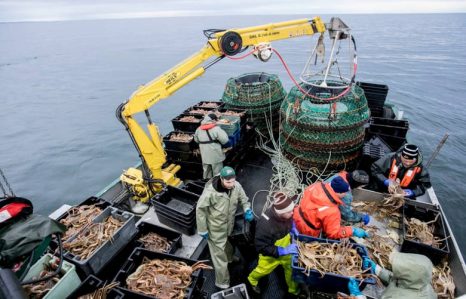
An inside look at the first haul of Quebec snow crab season
Captain Bertrand Desbois sets off aboard the Dauphin III from the Port of Matane at 5 a.m., eager to check in on the first Quebec snow crab traps of the season, launched the night before. Radio-Canada journalist Maxime Corneau accompanied the crew of seven on their first fishing expedition of 2018 and documented what he saw. A few minutes out, the boat comes up alongside two pink buoys announcing the kilometre-long line where some 20 traps are sunk. “It’s a strong start, like last year,” says Desbois as the traps are raised out of the water by a winch. >click to read<12:04

Gulf of St. Lawrence snow crab season to be discussed at Moncton meeting
Fisheries and Oceans Canada officials will meet with snow crab industry representatives in Moncton Wednesday to discuss the upcoming season in the southern Gulf of St. Lawrence. The purpose of the meeting is to “provide advice regarding global management issues in the snow crab fishery,” according to the agenda. Some of the topics to be discussed during the public meeting include the season opening and new management measures, proposed changes to the Fisheries Act and an update on enforcement of conservation and protection. >click to read< 08:14
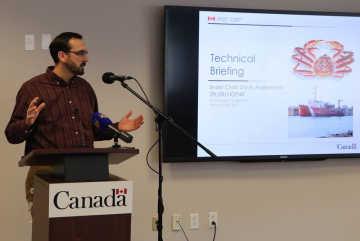
DFO says Snow crab biomass relatively unchanged
Snow crab stocks off Newfoundland and Labrador remain at low levels going into this spring’s fishery, and while that may result in status quo or lower quotas, there is optimism for coming years. The optimism may only hold true if measures are taken to further protect an apparent increase in small and medium-sized crab being seen in most areas of the province. A technical briefing held by the Department of Fisheries and Oceans (DFO) Monday morning in St. John’s showed that while the snow crab biomass remains relatively unchanged from last year, more favourable water temperatures for crab have resulted in better production in the last couple of years. >click to read< 22:01

Snow crab landing in Bering Sea
The Bering Sea opilio snow crab fishery is slowly moving forward, with 2 percent of the quota landed. Eight vessels made nine landings for a total weight in the past week of some 471,000 pounds, from a quota of 18.5 million pounds, according to the Alaska Department of Fish and Game in Unalaska. The number of snow crab per pot is down somewhat from the same period last year. The most recent count was 201 crustaceans last week, down from 238 last year, according to Fish and Game. “From talking to the fleet, it’s been a slow start for the boats that are out there opie fishing,” said state fisheries biologist Ethan Nichols. But it’s likely to pick up, >click here to read<17:53

Bering Sea snow crab fishing underway
Bering Sea snow crab fishing was just getting underway, and the first deliveries were expected later this week, according to Ethan Nichols of the Alaska Department of Fish and Game in Unalaska/Dutch Harbor when the snow crab quota was cut back again this year by the Alaska Department of Fish and Game. There is a reduced Bering Sea Tanner crab season, thanks to new rules allowing fishing when fewer female crustaceans are present. And small boats in the Unalaska Island area have a Tanner fishery for the first time in two years. >click here to read<13:03
Record high prices, strong demand for Canadian snow crab bodes well for Alaska
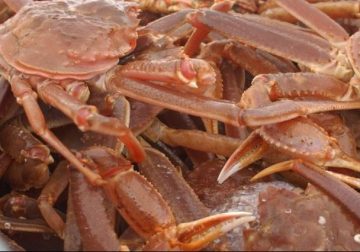 The top executives of Royal Greenland and Ocean Choice International (OCI) noted demand has remained strong for Canadian snow crab in 2017, despite record-high prices caused by reduced supply from the Newfoundland and Labrador fishery. In April, Canada’s Department of Fisheries and Oceans (DFO) cut the 2017/2018 total allowable catch (TAC) for the Newfoundland and Labrador fishery 22% year-on-year — to 35,419 metric tons — causing prices to increase to record levels of over $8 per pound (for 5-8 ounce size crab) during the season, sources said. The Newfoundland season started on April 6 and finished between May and August, depending on the area. click here to read the story 18:38
The top executives of Royal Greenland and Ocean Choice International (OCI) noted demand has remained strong for Canadian snow crab in 2017, despite record-high prices caused by reduced supply from the Newfoundland and Labrador fishery. In April, Canada’s Department of Fisheries and Oceans (DFO) cut the 2017/2018 total allowable catch (TAC) for the Newfoundland and Labrador fishery 22% year-on-year — to 35,419 metric tons — causing prices to increase to record levels of over $8 per pound (for 5-8 ounce size crab) during the season, sources said. The Newfoundland season started on April 6 and finished between May and August, depending on the area. click here to read the story 18:38
Inshore harvesters, including a member of FFAW’s inshore council dispute snow crab science
 The Federation of Independent Sea Harvesters of Newfoundland and Labrador (FISH-NL) questions why the federal Department of Fisheries and Oceans would report poor scientific signs of snow crab when it’s not the full picture of the state of the resource. The results of crab surveys carried out by inshore harvesters won’t be available until December. “The science is only half of the story — inshore harvesters have the other half,” says Ryan Cleary, President of FISH-NL. “This shows the same old disconnect exists between DFO science and what harvesters are reporting on the water. Why does DFO report doom and gloom when all the information is not on the table?” click here to read the press release 09:19
The Federation of Independent Sea Harvesters of Newfoundland and Labrador (FISH-NL) questions why the federal Department of Fisheries and Oceans would report poor scientific signs of snow crab when it’s not the full picture of the state of the resource. The results of crab surveys carried out by inshore harvesters won’t be available until December. “The science is only half of the story — inshore harvesters have the other half,” says Ryan Cleary, President of FISH-NL. “This shows the same old disconnect exists between DFO science and what harvesters are reporting on the water. Why does DFO report doom and gloom when all the information is not on the table?” click here to read the press release 09:19
Poor signs for N.L. snow crab
 Aboard the Canadian Coast Guard ship Vladykov this week, crabs captured in Department of Fisheries and Oceans (DFO) traps were being pulled from the water, dumped into orange, plastic baskets, pulled out, measured and categorized before being dumped back. These were among the last of the crab checked for the 2017 inshore survey, ongoing since May.,,, The official survey results won’t be released until early next year (after going to DFO’s stock assessment branch and peer review), but generally speaking, Mullowney suggested there is continued decline, with ocean warming a significant factor and things like predation increasingly important. click here to read the story 08:59
Aboard the Canadian Coast Guard ship Vladykov this week, crabs captured in Department of Fisheries and Oceans (DFO) traps were being pulled from the water, dumped into orange, plastic baskets, pulled out, measured and categorized before being dumped back. These were among the last of the crab checked for the 2017 inshore survey, ongoing since May.,,, The official survey results won’t be released until early next year (after going to DFO’s stock assessment branch and peer review), but generally speaking, Mullowney suggested there is continued decline, with ocean warming a significant factor and things like predation increasingly important. click here to read the story 08:59
Seafood sold in U.S. grocery stores is being processed by North Korean labor
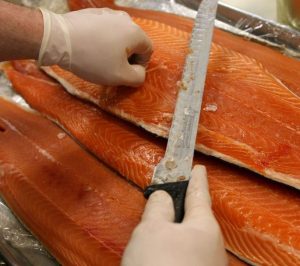 The case for knowing where your food comes from grows ever stronger: A new Associated Press investigation reveals America’s hunger for seafood is unwittingly helping fund the North Korean dictatorship. According to the report, North Korea is outsourcing workers to plants in China that process seafood, including wild-caught salmon, snow crab, and squid, that’s sold in U.S. grocery stores such as Walmart and Aldi — meaning American grocery shoppers “may inadvertently have subsidized the North Korean government as it builds its nuclear weapons program.” click here to read the story 22:31
The case for knowing where your food comes from grows ever stronger: A new Associated Press investigation reveals America’s hunger for seafood is unwittingly helping fund the North Korean dictatorship. According to the report, North Korea is outsourcing workers to plants in China that process seafood, including wild-caught salmon, snow crab, and squid, that’s sold in U.S. grocery stores such as Walmart and Aldi — meaning American grocery shoppers “may inadvertently have subsidized the North Korean government as it builds its nuclear weapons program.” click here to read the story 22:31






